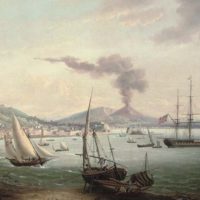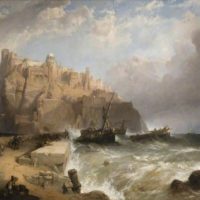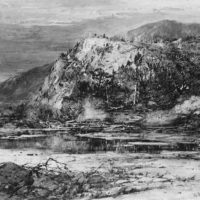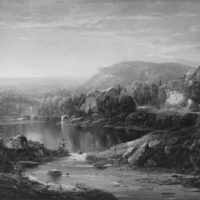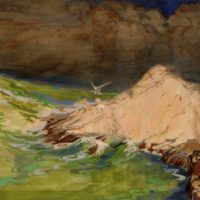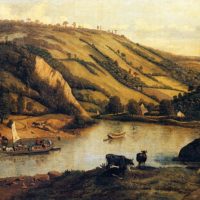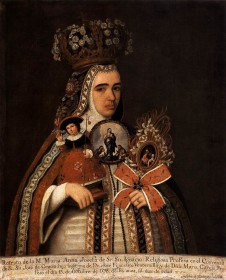Alcibar was a famous painter in Mexico in the viceregal period. He painted murals in many cathedrals, and painted portraits of nuns. In 18th-century Mexico hundreds of portraits were produced on the occasion of taking vow of chastity of young girls going to a convent. This painting representing a 16 years old girl belongs to this series.
Mariotto Albertinelli, the pupil of Cosimo Rosselli, ran a workshop with Fra Bartolomeo, and like him shared an interest in the painting of Perugino, whose illuminating example is apparent in this work, unanimously considered to be his masterpiece. However, we cannot fail to notice also the monumentality of the figures and the geometrically divided landscape, influences, these, of Fra Bartolomeo. The spatial breadth is still characteristic of Perugino, but the narrative content is more vigorous.
This is an early work of the artist. Featuring the Virgin adoring the Child with the help of an angel who hands him some of the instruments of the Passion, it is formally rather weak in its awkward spatial and figural relationships.
In 1621, Ferdinando Gonzaga, the Duke of Mantua, commissioned a series of The Story of Venus for his Villa Favorita. Completed in 1633, these pictures are enlarged versions of the round compositions of a cycle formerly executed for the prince Borghese towards 1615-17. The Cupids Disarmed belongs to the series.
